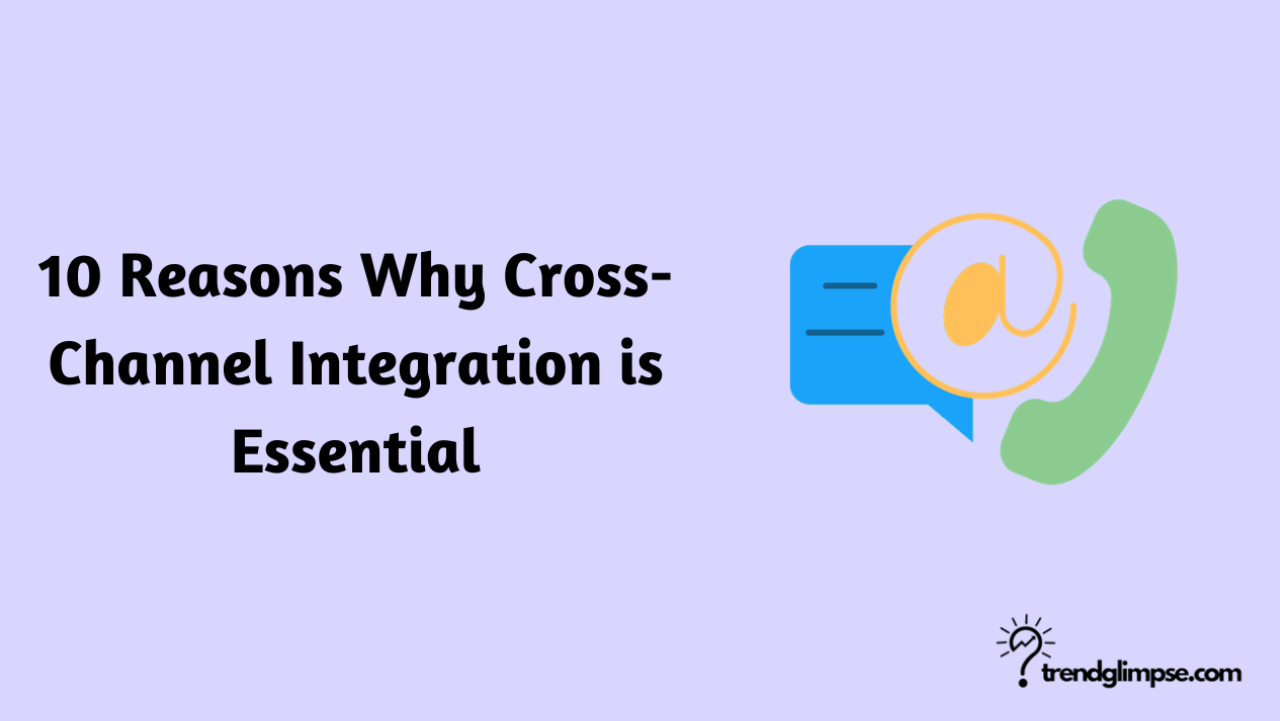Introduction
In today’s omnichannel world, customers expect consistent experiences and messaging across all touchpoints. Failing to have an integrated cross-channel strategy comes at a real cost — from declining conversion rates to damaged brand reputation.
In this article, we’ll explore 10 compelling reasons why cross-channel integration should be a priority for savvy marketers and business leaders alike. From increasing efficiency to boosting sales, we’ll discuss key benefits like improved analytics, enhanced workflows and minimized friction for users.
Think of all the different ways customers interact with your business – website, mobile app, retail stores, phone calls, email, social media. Now imagine if all those channels worked seamlessly together, creating a unified customer experience. That’s the power of cross-channel integration.
1. It Provides A Consistent Experience
A consistent customer experience across all channels is key. When done well, as seen with companies like Apple or Nordstrom, people engage seamlessly across web, mobile, stores, gaining familiarity and trust.
To achieve this, map journeys, standardize branding, invest in integrated platforms. Make transitions frictionless between channels through shared customer data profiles and synchronized promotions or services.
2. It Gives A Single Source Of Truth
Consolidating all customer interactions into an integrated profile and metrics dashboard, as Netflix does beautifully, provides that coveted single source of truth about each person’s needs and behaviors. This informs smarter decisions, service improvements, and customized recommendations.
To get there, connect disparate data sources via APIs and build unified analytics systems tied to unique customer IDs. Continuously sync all channels so updates surface true insights vs fragmented views.
3. It Minimizes Operational Silos
Integrating data and operations across sales channels breaks down internal silos between teams. Companies like Nike have unified online and offline operations, enabling seamless sharing of inventory and customer data across web, retail stores, and apps.
This interconnectivity minimizes inefficient redundancies and lack of visibility that occur when channels function in isolation. Take an omnichannel approach.
4. It Prevents Duplicated Efforts
Integrating your channels prevents redundant work across teams. For example, Nordstrom linked its email and social campaigns so marketers weren’t promoting the same content twice.
This workflow alignment enabled greater efficiency. Look for overlaps across teams and consolidate where you can. Identify a project management lead to coordinate cross-channel initiatives in order to minimize duplicated efforts.
5. It Enables Shared Metrics
Integration provides a unified view of key metrics like clicks, conversions, and ROI. Top brands like Nike have capitalized on this to optimize budget allocation.
Aim to track interactions holistically across channels instead of in silos. Develop clear attribution models and reporting workflows to surface insights. With shared metrics powering decisions, you’ll be able to identify your best-performing efforts and invest accordingly.
6. It Allows Cross-Promotion
Seamlessly integrating channels like social media, email, and web allows cross-promotion across platforms. For example, Starbucks drives app downloads via ads on Instagram, cross-posts deals to its email subscribers, and promotes in-app exclusive products on its website.
Following customers across channels amplifies reach and makes promotion efficient. Start with identifying top-funnel and mid-funnel channels and ensure they direct users to primary conversion channels.
7. It Facilitates Upselling & Cross-selling
Integrated data on customer preferences and behaviors enables personalized upsell and cross-sell opportunities across touchpoints. For instance, Chewy uses order history data to recommend complementary pet products in post-purchase emails, thereby increasing order values.
Similarly, credit card companies analyze purchase data to offer rewards cards relevant to spending habits. To leverage cross-channel data for upselling and cross-selling, focus first on unifying data structures across systems and arming customer-facing touchpoints with purchase insights. Test offers systematically across channels for impact.
8. It Creates Relevant Experiences
Integrating data acrosschannels allows brands to create tailored, meaningful interactions with each customer.
By connecting web, mobile, email, and in-store data, you can gain a complete view of individuals to serve hyper-relevant offers and recommendations that demonstrate you understand their needs, boosting engagement. Companies like Nike and Starbucks lead the way in crafting relevant digital-to-physical experiences.
9. It Builds Trust
Redundant, disjointed messaging across touchpoints erodes consumer confidence in a brand. Cross-channel integration with consistent personalization helps build trust by signaling the brand truly knows its customer as an individual. Facilitating secure data sharing under strong data governance also promotes trust.
Companies like USAA bank and the Apple ecosystem keep customer data synchronized across channels to strengthen trust through cohesive, secure, helpful experiences.
10. It Multiplies Touchpoints
Integrating channels multiplies customer touchpoints by creating a unified experience across web, mobile, email, social media, and more. Companies like Nike and Disney have mastered cross-channel personalization, recognizing customers across devices and serving relevant content accordingly.
This both improves the customer experience and provides more opportunities for brands to engage audiences. Map the customer journey across channels and ensure you aren’t losing customers to information gaps between platforms. Treat every interaction like an open door to strengthen your relationship.
Conclusion
As we’ve explored, cross-channel integration offers businesses numerous benefits by unifying data and processes between channels. Customers enjoy seamless experiences across touchpoints, while businesses gain a comprehensive understanding of their customer journeys.
Through streamlined communication and shared data and insights between channels, companies can improve personalization, deliver consistent messaging, and make smarter decisions. While integration takes concerted effort, cross-channel consistency is essential for gaining a competitive advantage today.
By implementing an integrated approach, brands can provide cohesive interactions at scale to better attract, engage, and retain customers. The evidence clearly shows cross-channel integration as a vital strategy in the omnichannel age.

I have always been fascinated by the inner workings of companies and industries. So I decided to study business to explore it more. My goal is to take all my research and turn it into cool stories that give people a better understanding of the business world.

